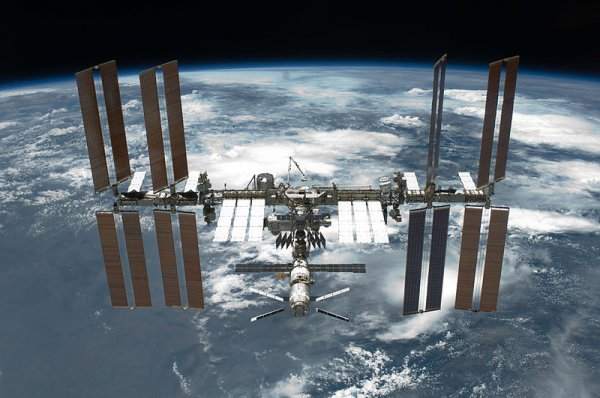NASA engineers managed to restore real-time communications with the International Space Station (ISS) after connections were apparently severed following a routine software update.
Before the fix was implemented, the ISS was only able to communicate with Mission Control when it passed over ground stations in Russia.

“This is the same way they used to do it in the 1960s, with Gemini and Apollo,” a NASA spokesman told CNN.
“It’s not a panicked mood that takes over mission control,” Byerly said before communications were fixed. “Anybody’s who’s been here has seen that.”
Meanwhile, Jerry Linenger, who was on the Russian space station Mir during a dangerous fire in 1997, told the Washington Post that losing communication with the ground “is not a terrible thing” if there is no crisis going on.
“You feel pretty confident up there that you can handle it. You’re flying the spacecraft.”
In related space station news, Cheryl Nickerson, a microbiologist at Arizona State University’s Biodesign Institute, recently presented her research findings on the effects of microgravity on disease-causing organisms based on research conducted aboard the ISS.
Indeed, spaceflight culture apparently increases the disease-causing potential (virulence) of the foodborne pathogen Salmonella, yet many of the genes known to be important for its virulence were not turned on and off as expected when this organism is grown on Earth. Understanding how this switching is regulated may be useful for designing targeted strategies to prevent infection.
Further research by Nickerson’s team pointed to important implications for the understanding of health and disease on Earth. Her team, including NASA scientists, demonstrated that one of the central factors affecting the behavior of pathogenic cells is the physical force produced by the movement of fluid over a bacterial cell’s sensitive surface. This property, known as fluid shear, helps modulate a broad range of cell behaviors, provoking changes in cell morphology, virulence, and global alterations in gene expression, in pathogens like Salmonella.
“There are conditions that are encountered by pathogens during the infection process in the human body that are relevant to conditions that these same organisms experience when cultured in spaceflight,” Nickerson explained.
“By studying the effect of spaceflight on the disease-causing potential of major pathogens like Salmonella, we may be able to provide insight into infectious disease mechanisms that cannot be attained using traditional experimental approaches on Earth, where gravity can mask key cellular responses.”
Nickerson’s spaceflight studies also pinpointed an evolutionarily conserved protein—called Hfq—which appears to act as a global regulator of gene responses to spaceflight conditions. Further research by her team established that Hfq is a central mediator in the spaceflight-induced responses of other bacterial pathogens, including Pseudomonas aeruginosa, thus representing the first spaceflight-induced regulator acting across bacterial species.
These microgravity studies open a new window into the infectious disease mechanisms of Salmonella, an aggressive pathogen responsible for infecting an estimated 94 million people globally and causing 155,000 deaths annually.
While Salmonella has been a pathogen of choice for a broad range of spaceflight investigations, Nickerson stresses that her findings have spaceflight and Earth-based implications. Her confidence is based on her team’s work showing that microgravity culture also uniquely alters gene expression and pathogenesis-related responses in other microorganisms.
“Recognizing that the spaceflight environment imparts a unique signal capable of modifying Salmonella virulence, we will use this same principle in an effort to enhance the protective immune response of the recombinant attenuated Salmonella vaccine strain,” Nickerson added.
“It is exciting to me that our work to discover how to keep astronauts healthy during spaceflight may translate into novel ways to prevent infectious diseases here on Earth.”
Nickerson’s space-based microgravity experiments are conducted in conjunction with simultaneous Earth-based controls housed in the same hardware as those in orbit, to compare the behavior of bacterial cells under normal Earth gravity.
Additional information is provided using Earth-based cell cultures which are subjected to a kind of simulated microgravity, produced by culturing cells in a rotating wall vessel bioreactor (RWV), a device designed by NASA engineers to replicate aspects of cell culture in the spaceflight environment.






